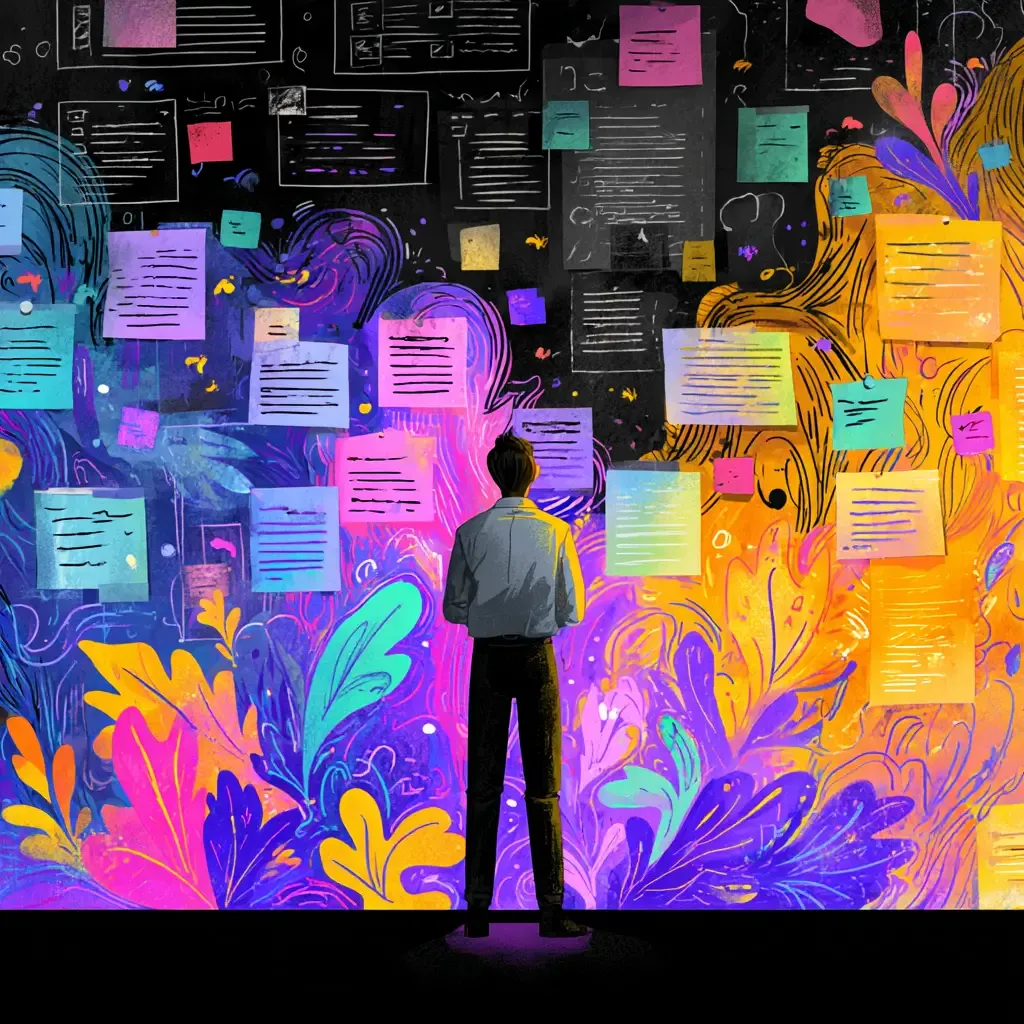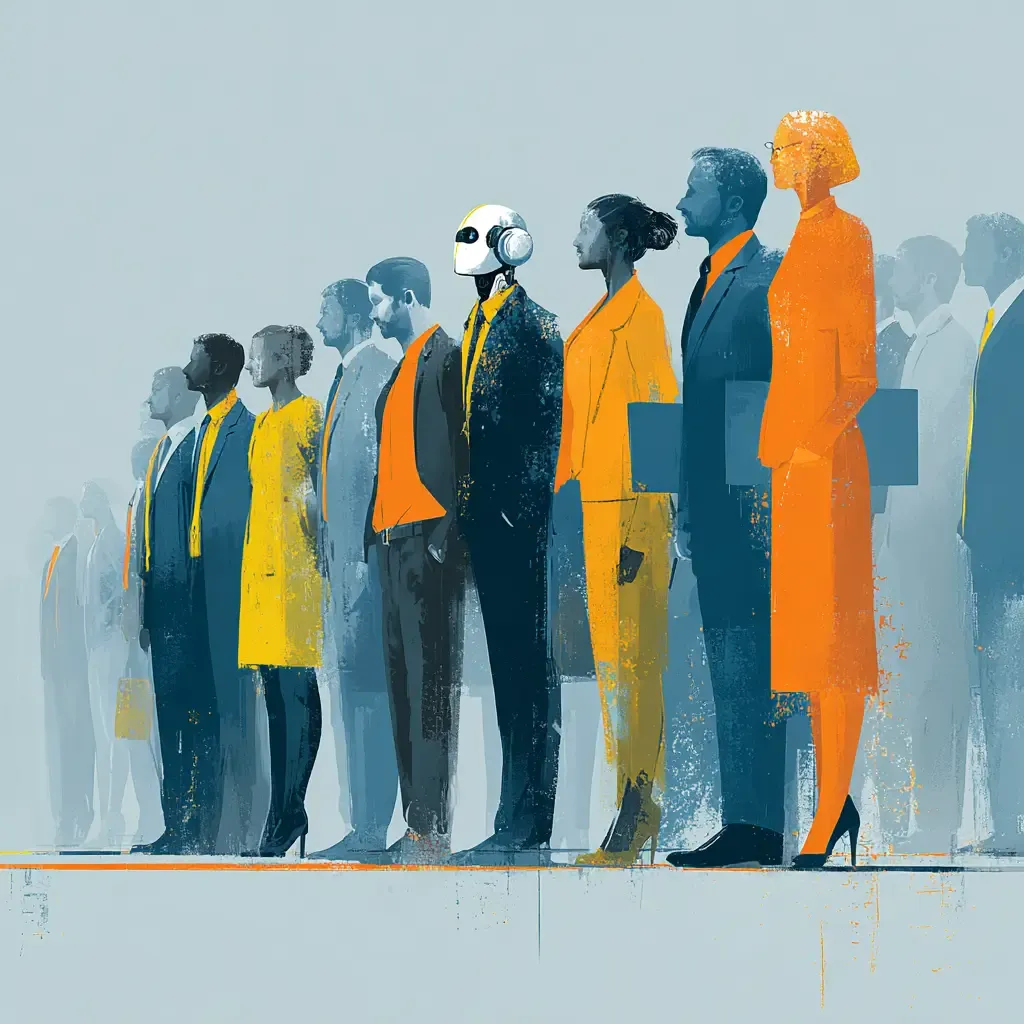Harnessing Agentic AI for Cross-Functional Workflows
The first wave of AI in the enterprise focused on augmentation. It helped us write faster, summarize notes, draft emails, and answer questions. But the second wave is here—and it’s agentic.
Agentic AI refers to AI that doesn’t just assist humans—it acts. It sets goals, plans steps, adapts to feedback, and completes tasks autonomously. This is not just a smarter assistant. It’s a junior colleague. A team member. A new layer in the workflow.
For business leaders, digital transformation teams, and change practitioners, this is a seismic shift. Because agentic AI doesn’t just change the tools we use—it changes how work gets done.
From Assistants to Agents
You’ve seen AI assistants in action. They help schedule meetings, generate copy, answer FAQs, and automate repeatable workflows. These are helpful, but they still require a human at the helm.
Agentic AI is different. It takes an objective—“generate a competitive landscape analysis,” “onboard this new employee,” “resolve this billing issue”—and breaks it down into subtasks. Then it executes. It might:
- Query databases
- Interview internal stakeholders (via chat)
- Draft and format documents
- Route deliverables for approval
- Escalate when it hits a blocker
All of this can happen asynchronously, across systems, and in collaboration with human team members.
We’re already seeing the first waves of this in Microsoft Copilot, ChatGPT’s custom GPTs, Salesforce’s Einstein Copilot Studio, and platforms like MultiOn and Cognosys. The shift isn’t speculative—it’s underway.
Why It Matters for Cross-Functional Work
Most transformation initiatives stall not because of vision, but because of execution across silos. HR, IT, Finance, Operations—they all have different systems, vocabularies, workflows, and priorities. The coordination tax is real.
Agentic AI can help eliminate the drag:
- Handoff Automation: An agent can close the loop between departments. For instance, when HR initiates onboarding, an AI agent could automatically generate IT provisioning tasks, alert Finance about payroll setup, and ensure Compliance receives policy sign-offs.
- Context Preservation: Because agents can remember long sequences and maintain shared context, they don’t drop the baton like traditional workflows often do.
- Speed: Agents work 24/7, don’t fatigue, and can parallelize tasks. That means fewer status meetings, fewer pings, and more momentum.
The result? Faster workflows, fewer errors, and a smoother experience for employees and customers alike.
Real-World Scenarios
Let’s ground this in a few examples:
1. New Hire Onboarding (HR + IT + Facilities)
A new hire signs their contract. That triggers an HR AI agent, which:
- Prepares and sends the onboarding packet
- Notifies the IT agent to provision accounts, devices, and access rights
- Alerts Facilities to assign a desk or badge
- Checks in with the manager to schedule welcome meetings
Each of these agents talks to each other and reports back. If something’s blocked, the responsible human is looped in with context intact.
2. Customer Issue Resolution (Support + Engineering + Finance)
A customer flags a recurring billing error. The support agent triages the issue, then passes it to:
- A finance agent to cross-check transaction records
- An engineering agent to query the system logs
- A communications agent to draft an update and apology email
No siloed tickets. No “who owns this?” confusion. Just a network of agents working toward resolution.
3. Quarter-End Close (Finance + Sales + Legal)
At quarter-end, time is tight. An AI agent can:
- Pull the latest sales data
- Generate forecast scenarios
- Draft renewal contracts using approved language
- Route documents to legal for review and redline
The humans stay in the loop—but they’re reviewing, not chasing.
What This Means for Change Practitioners
Agentic AI isn’t just a new tool to deploy. It’s a fundamental shift in how work is distributed, tracked, and experienced. For change leaders, this raises new questions:
- How do we prepare employees to collaborate with autonomous agents?
- What new skills are needed to supervise and train AI coworkers?
- How do we track accountability in a hybrid AI/human workflow?
- How do we balance speed with transparency, especially in regulated environments?
The opportunity here is enormous—but so is the need for intentional design.
The Emerging Playbook
To stay ahead, here’s what organizations should begin doing now:
1. Map Workflows for Agentic Potential
Start by identifying repetitive, cross-functional workflows that require coordination but not deep judgment. These are prime candidates for agent augmentation.
2. Identify Friction Zones
Where do things stall? Where does info get lost? Where are people just chasing updates? These are the stress points where AI can create the most value.
3. Prepare People, Not Just Systems
Employees need training not just in using AI—but in working alongside it. That includes:
- Knowing when to trust and when to verify
- Understanding how to escalate or override
- Developing prompt fluency for better collaboration
4. Stand Up a Digital Co-Worker Governance Model
Who trains the agents? Who owns outcomes? What happens when an agent makes a mistake? A lightweight governance model helps maintain accountability.
5. Start with Shadow Agents
Before letting agents fully execute, deploy them in “shadow mode.” Let them recommend actions, but require human approval. This builds trust—and a record of performance.
Risks and Responsibilities
Of course, this isn’t all upside. With agentic AI comes a new risk surface:
- Hallucinations: Agents may act on bad info or faulty assumptions.
- Overreach: Without clear boundaries, agents may take actions they shouldn’t.
- Security and Access: Agents need credentials to do their work. That means new identity and access management challenges.
- Organizational Dependence: If AI becomes too central, outages or bugs could cripple key workflows.
Change and transformation leaders must work closely with IT, Security, and Legal to design systems that are safe, resilient, and aligned to organizational values.
Final Thought
Agentic AI isn’t the future. It’s the now quietly being embedded across platforms and processes. But the organizations that thrive won’t be those that simply plug it in. They’ll be the ones that reimagine how work gets done—and have the change leadership in place to make it real.
This is the next operating model. And the window to shape it is open—right now.
ChangeGuild: Power to the Practitioner™
Frequently Asked Questions
What is agentic AI?
It’s AI that doesn’t just assist but acts—setting goals, planning steps, adapting to feedback, and completing tasks like a junior colleague.
How is it different from AI assistants?
Assistants wait for prompts, while agents can take an objective, break it into subtasks, and carry them through across systems with minimal human intervention.
Why does this matter for organizations?
Agentic AI reduces cross-functional friction, automates handoffs, preserves context, and accelerates workflows—helping work move faster with fewer errors.
What are real-world examples?
Onboarding new hires, resolving customer issues, and closing financial quarters are all scenarios where agents can coordinate work across HR, IT, Finance, and Legal.
What risks should leaders watch?
Agents can act on bad data, overstep boundaries, introduce security challenges, or create dependencies that leave organizations exposed during outages.
Power Up for Agentic AI
Agentic AI is already reshaping workflows, collapsing silos, and accelerating execution. Change practitioners will be called on to lead this transition—helping organizations adopt responsibly, design governance, and build trust. At ChangeGuild, we equip you with the tools, insights, and community to step confidently into that role.
This post is free, and if it supported your work, feel free to support mine. Every bit helps keep the ideas flowing—and the practitioners powered. [Support the Work]






